

Executive Summary
The sterile medical packaging market is experiencing significant growth, driven by the increasing demand for safe and contamination-free medical products. As healthcare standards rise globally and awareness of infection control grows, the need for sterile medical packaging to protect sensitive medical devices and pharmaceuticals has intensified. According to International Market Research (IMR), the global sterile medical packaging market is projected to grow from approximately USD 34 billion in 2024 to around USD 58 billion by 2031, at a compound annual growth rate (CAGR) of roughly 8.2%.
Market Overview
Definition and Importance
Sterile medical packaging refers to specialized packaging solutions that ensure sterility and prevent contamination of medical devices, instruments, and pharmaceuticals. These packaging solutions, which include pouches, trays, bottles, and blister packs, are designed to withstand sterilization processes and maintain the integrity of their contents until they reach the end-user. Sterile packaging is vital in maintaining hygiene standards and preventing infections, especially in the context of surgical and diagnostic applications.
Market Drivers
Several key factors are fueling the growth of the sterile medical packaging market:
Challenges
Despite its growth potential, the sterile medical packaging market faces some challenges:
Market Segmentation
By Material Type
By Product Type
By Application
Regional Insights
North America
North America holds a leading share in the sterile medical packaging market, accounting for around 35% in 2023. The region’s dominance is driven by high healthcare expenditure, advanced healthcare infrastructure, and stringent regulatory standards by bodies like the FDA. IMR projects North America to continue leading, with a CAGR of about 7.8% over the forecast period.
Europe
Europe is the second-largest market, fueled by government healthcare investments and growing awareness of infection prevention. The European market is projected to grow at a CAGR of approximately 8.1% from 2024 to 2031, as healthcare providers increasingly adopt sterile packaging solutions to meet regulatory standards.
Asia-Pacific
Asia-Pacific is anticipated to experience the highest growth rate due to increasing healthcare access, rising medical tourism, and expanding pharmaceutical manufacturing in countries like China, India, and Japan. IMR projects a CAGR of 9.5% in the region, driven by increased demand for safe, sterile packaging.
Latin America and the Middle East & Africa
These regions currently represent smaller shares of the market but are expected to witness steady growth due to improving healthcare infrastructure and increased government focus on healthcare. IMR anticipates a CAGR of around 7.2% in these regions as healthcare investments increase.
Market Forecast and Projections (2024 - 2031)
IMR projects that the sterile medical packaging market will grow from approximately USD 34 billion in 2024 to around USD 58 billion by 2031, with a CAGR of 8.2% over the forecast period.
Key Players and Competitive Landscape
The sterile medical packaging market is highly competitive, with established players and new entrants focusing on innovation and sustainability. Key players in the market include:
These companies invest in R&D to enhance packaging materials, durability, and sustainability. Partnerships and collaborations with healthcare organizations are common strategies to expand market presence and address evolving healthcare needs.
Trends and Opportunities
1. Growth of Sustainable Packaging Solutions
With environmental concerns rising, manufacturers are focusing on sustainable materials, including recyclable and biodegradable options. This shift presents an opportunity for companies to innovate and meet both healthcare and environmental standards.
2. Technological Advancements in Sterilization
New sterilization methods, such as low-temperature sterilization and ethylene oxide (EtO)-free options, are enhancing the effectiveness of sterile packaging. These advancements offer potential for improved sterilization in a wider range of packaging materials.
3. Increasing Use of Single-Use Medical Devices
The shift towards single-use medical devices, driven by infection control protocols, is increasing demand for sterile packaging, especially in hospitals and clinics.
4. Rise in Home Healthcare and E-Commerce
The growth of home healthcare and online pharmacies is increasing the demand for sterile packaging that is safe for transport and meets high sterility standards.
Conclusion
The sterile medical packaging market is set for strong growth due to increasing healthcare demands, regulatory standards, and technological advancements. According to IMR projections, the market is expected to reach around USD 58 billion by 2031, growing at a CAGR of approximately 8.2% from 2024 to 2031. Factors such as sustainable packaging innovation, improved sterilization methods, and the adoption of single-use medical devices will drive this growth, ensuring that the sterile medical packaging industry remains essential to the healthcare and pharmaceutical sectors globally.
Source: International Market Research Analysis, 2024

International Market Research follows a comprehensive research methodology dedicated to offering the most accurate market estimation and analysis. It leverages a data triangulation methodology to estimate the market dynamics and deliver precise estimations. The company exploits a combination of top-down and bottom-up approaches for classifying and assessing quantitative aspects of the market.
This research study is based on exhaustive quantitative and qualitative analysis.
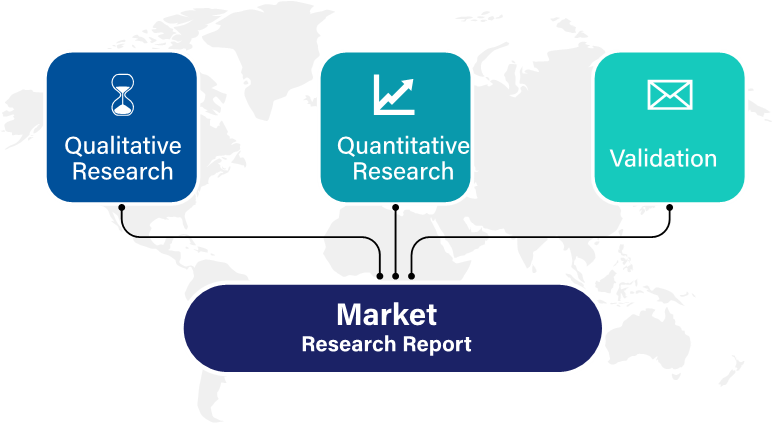
The Quantitative analysis involves numerous models, mathematical tools, projection, and sampling techniques. It encompasses the following steps:
Recognize market variables and derive market size.
Valuation of prospects, opportunities, and market penetration rates by analyzing Application Predictive Maintenance Solution, regional trends, etc.
Gauge historical market trends and derive present and future year-on-year growth trends
The qualitative analysis covers briefing about market dynamics and business opportunities and strategies. Lastly, all the research findings are authenticated over interviews with in-house industry experts, freelance consultants, and key opinion leaders, etc.
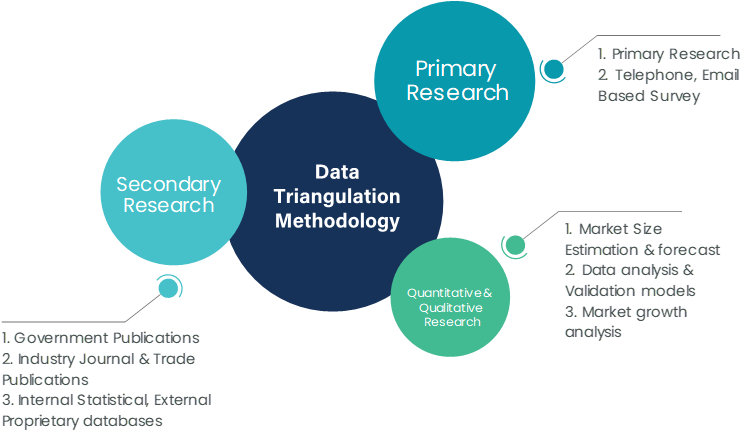
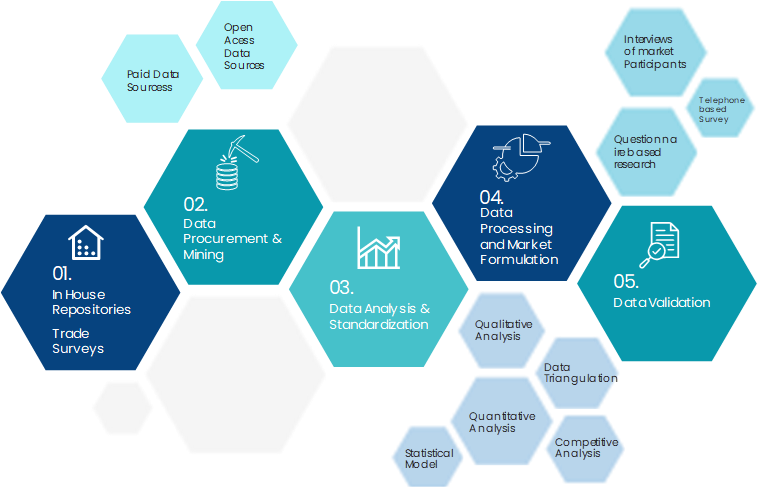
The preliminary raw data and relevant information are acquired via different sources such as secondary findings, trade surveys, and in-house repositories. Technical issues and trends are attained from technical symposia, surveys, and trade journals. Market dynamics such as driving factors, restraints/challenges, pricing trends, and opportunities are also collected using extensive secondary research via paid and open access data sources.
This info is then filtered to make sure that the related data including market trends, industry dynamics, and outlook is retained for the further research End-user. Data is constantly filtered to confirm that only authenticated sources are measured.
It comprises analysis & mapping of all the data gathered from the above step. It also includes the analysis of data differences observed across numerous data sources and arrives at final data points to be used for final calculations.
This step involves data End-user using various models, mathematical tools, projection, and sampling techniques to derive market findings. It also involves the placement of data points at suitable market spaces to gather viable conclusions.
Market estimates and forecasts are derived via simulation models. Collected data for market dynamics, Propulsion Type sets, pricing trends, and Type development is fed into the model and evaluated simultaneously. These factors are studied on a comparative basis, and their influence over the prediction period is quantified by means of regression, correlation, and time-series exploration. Analyst viewpoint & subject matter expert-based heuristic form of market sizing also plays an essential part in this step.
Some of the parameters measured as a part of the statistical model are:
Macro-economic indicators
Micro-economic indicators
Socio-political indicators
Environmental indicators
Propulsion Type indicators
Validation End-user aids to finalize data points to be used for final calculations. Primary Interviews are conducted to authenticate the data and analysis.
Primary research includes questionnaire-based research, email interactions, online surveys, and telephonic interviews. Interviewees are approached by prominent companies across the value chain including suppliers, Propulsion Type providers, domain experts, and buyers to ensure a holistic and unbiased picture of the market.
Industry participants involved in this research study include:
CEOs, VPs, market intelligence managers
Procuring and national sales managers technical personnel, distributors, and resellers
Research analysts and key opinion leaders from various domains
Our research methodology includes an ideal combination of primary and secondary initiatives.
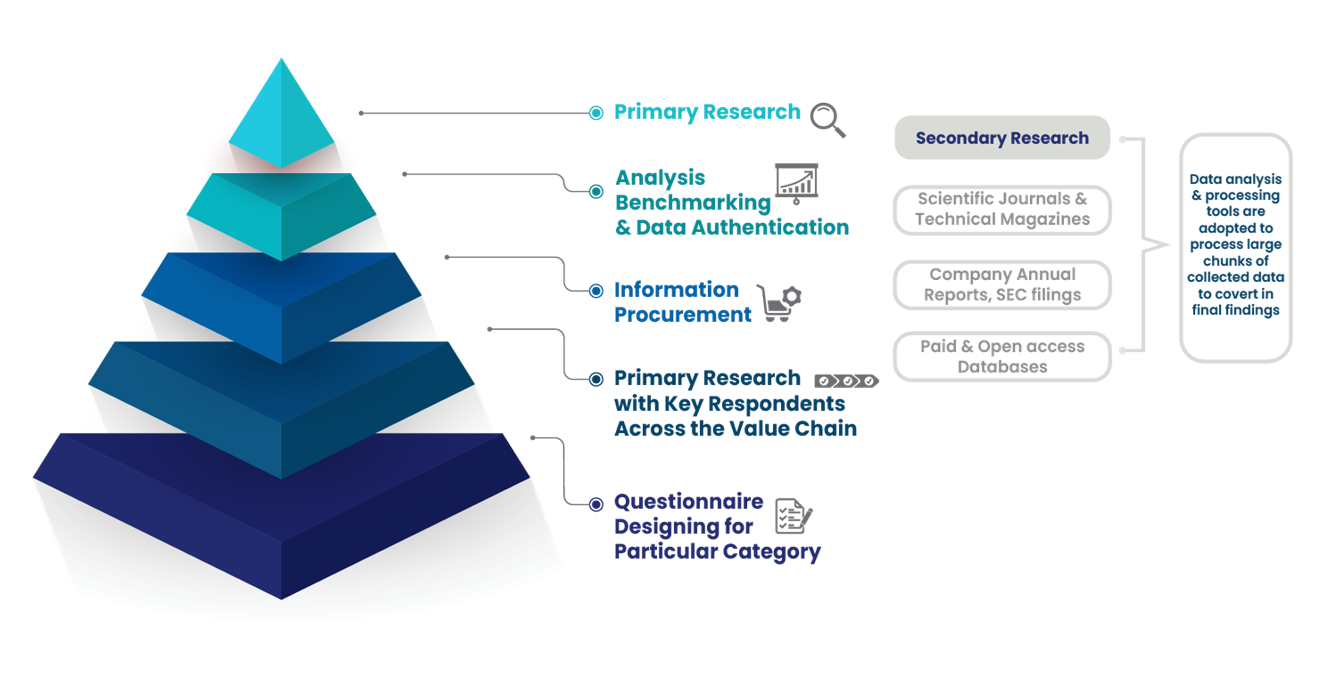
Source: International Market Research Analysis, 2024
It involves company databases such as Hoover's: This assists us to recognize financial information, the structure of the market participants, and the industry competitive landscape.
The secondary research sources referred to in the End-user are as follows:
Supply Chain and Inventory Managemental bodies, and organizations creating economic policies
National and international social welfare institutions
Company websites, financial reports and SEC filings, broker and investor reports
Related patent and regulatory databases
Statistical databases and market reports
Corporate Presentations, news, press release, and specification sheet of Manufacturers
Open access and paid data sources:
Eurostat
Statista
OneSource
Plastemart
WHO and World Bank
ITU
Factiva
Hoovers
Primary research includes online surveys and telephonic interviews.
Means of primary research: Email interactions, telephonic discussions, and questionnaire-based research, etc.
To validate our research findings and analysis, we conduct primary interviews of key industry participants. Insights from primary respondents help in validating the secondary research findings. It also develops Research Team’s expertise and market understanding.
Industry participants involved in this research study include:
CEOs, VPs, market intelligence managers
Procuring and national sales managers technical personnel, distributors, and resellers
Research analysts and key opinion leaders from various domains
We employ of following parameters in the absence of concrete data sources:
We assign weights to various parameters and quantify their market influence with the help of weighted average analysis, to derive an expected market growth rate
Income distribution, purchasing pattern, per capita income, and other end-user associated parameters
GDP, inflation rate, per capita disposable income, etc.
Expenditure, financial policies of the country, infrastructure and sector growth, and facilities
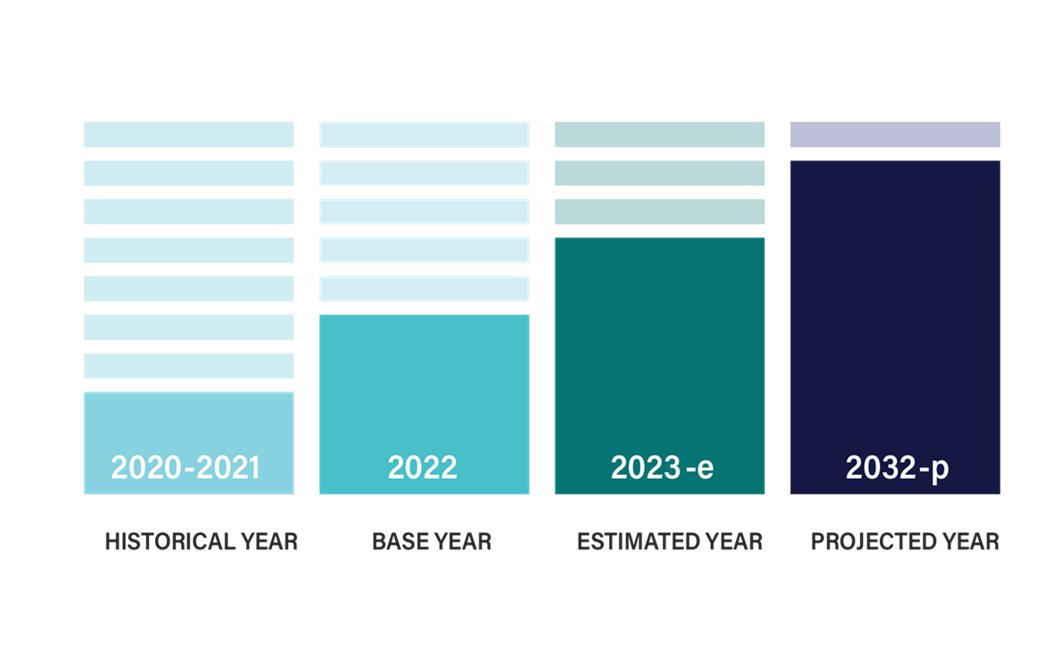
Source: International Market Research Analysis, 2024
International Market Research(IMR) is global leader in Market Research & Consulting services.